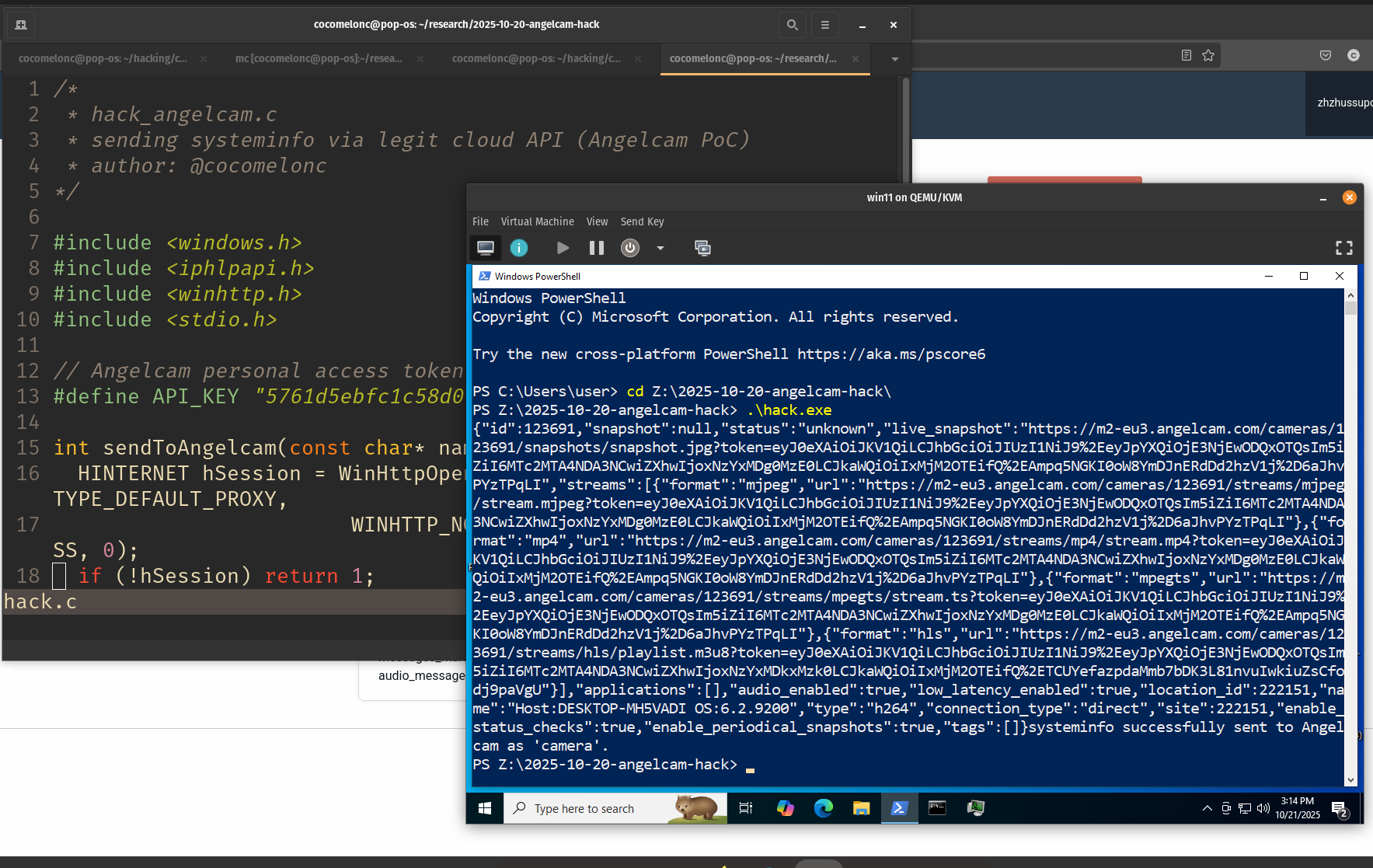Windows shellcoding - part 3. PE file format
﷽
Hello, cybersecurity enthusiasts and white hackers!

This post can be read not only as a continuation of the previous ones, but also as a separate post. This one is overview of PE file format.
PE file
What is PE file format? It’s the native file format of Win32. Its specification is derived somewhat from the Unix Coff (common object file format). The meaning of “portable executable” is that the file format is universal across win32 platform: the PE loader of every win32 platform recognizes and uses this file format even when Windows is running on CPU platforms other than Intel. It doesn’t mean your PE executables would be able to port to other CPU platforms without change. Thus studying the PE file format gives you valuable insights into the structure of Windows.
Basically PE file structure looks like this:
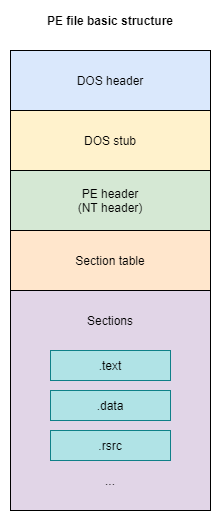
The PE File Format is essentially defined by the PE Header so you will want to read about that first, you don’t need to understand every single part of it but you should get an idea about it’s structure and be able to identify the parts that are most important.
DOS header
DOS header store the information needed to load the PE file. Therefore, this header is mandatory for loading a PE file.
DOS header structure:
typedef struct _IMAGE_DOS_HEADER { // DOS .EXE header
WORD e_magic; // Magic number
WORD e_cblp; // Bytes on last page of file
WORD e_cp; // Pages in file
WORD e_crlc; // Relocations
WORD e_cparhdr; // Size of header in paragraphs
WORD e_minalloc; // Minimum extra paragraphs needed
WORD e_maxalloc; // Maximum extra paragraphs needed
WORD e_ss; // Initial (relative) SS value
WORD e_sp; // Initial SP value
WORD e_csum; // Checksum
WORD e_ip; // Initial IP value
WORD e_cs; // Initial (relative) CS value
WORD e_lfarlc; // File address of relocation table
WORD e_ovno; // Overlay number
WORD e_res[4]; // Reserved words
WORD e_oemid; // OEM identifier (for e_oeminfo)
WORD e_oeminfo; // OEM information; e_oemid specific
WORD e_res2[10]; // Reserved words
LONG e_lfanew; // File address of new exe header
} IMAGE_DOS_HEADER, *PIMAGE_DOS_HEADER;
and it is 64 bytes in size. In this structure, the most important fields are e_magic and e_lfanew. The first two bytes of the header are the magic bytes which identify the file type, 4D 5A or “MZ” which are the initials of Mark Zbikowski who worked on DOS at Microsoft. These magic bytes define it as a PE file:

e_lfanew - is at offset 0x3c of the DOS HEADER and contains the offset to the PE header:
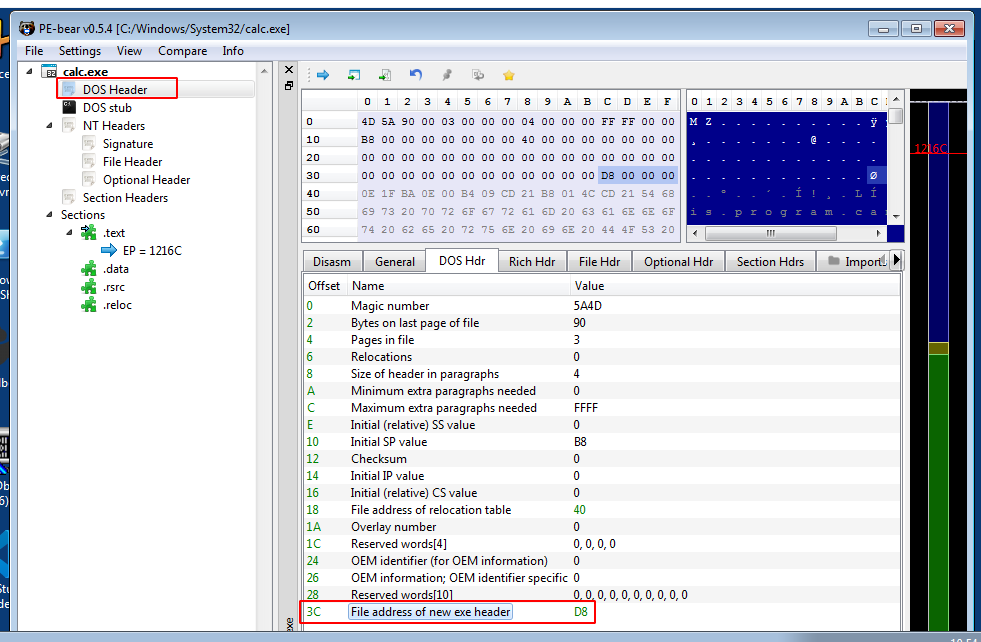
DOS stub
After the first 64 bytes of the file, a dos stub starts. This area in memory is mostly filled with zeros:
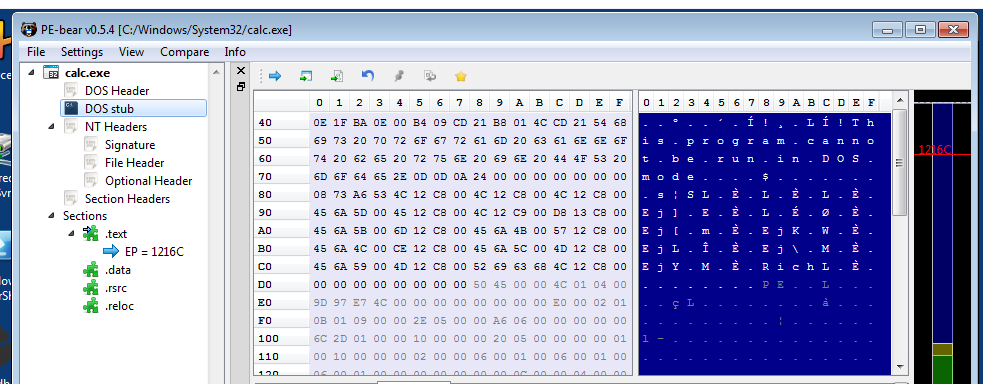
PE header
This portion is small and simply contains a file signature which are the magic bytes PE\0\0 or 50 45 00 00:
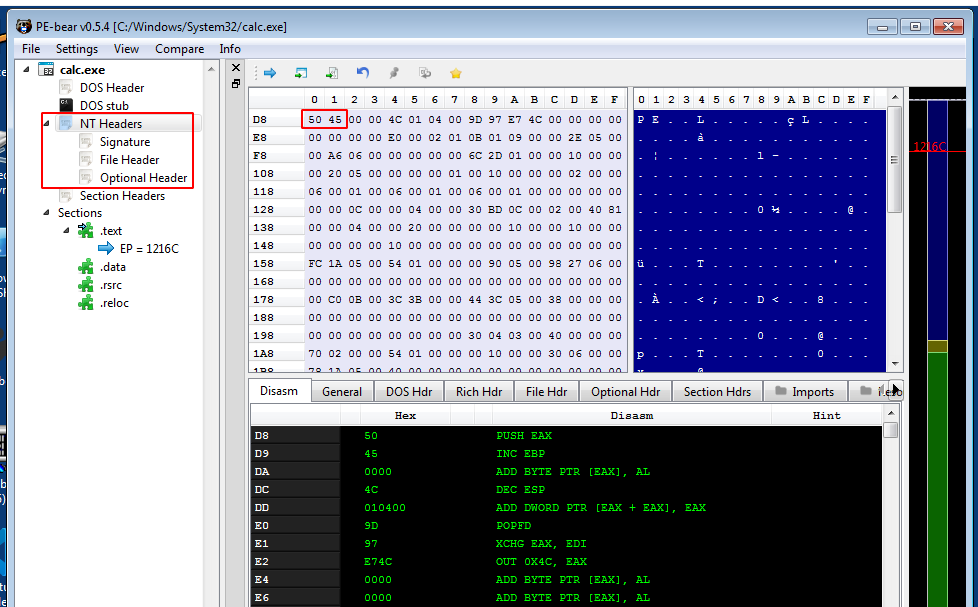
It’s structure:
typedef struct _IMAGE_NT_HEADERS {
DWORD Signature;
IMAGE_FILE_HEADER FileHeader;
IMAGE_OPTIONAL_HEADER32 OptionalHeader;
} IMAGE_NT_HEADERS32, *PIMAGE_NT_HEADERS32;
Let’s take a closer look at this structure.
File Header (or COFF Header) - a set of fields describing the basic characteristics of the file:
typedef struct _IMAGE_FILE_HEADER {
WORD Machine;
WORD NumberOfSections;
DWORD TimeDateStamp;
DWORD PointerToSymbolTable;
DWORD NumberOfSymbols;
WORD SizeOfOptionalHeader;
WORD Characteristics;
} IMAGE_FILE_HEADER, *PIMAGE_FILE_HEADER;
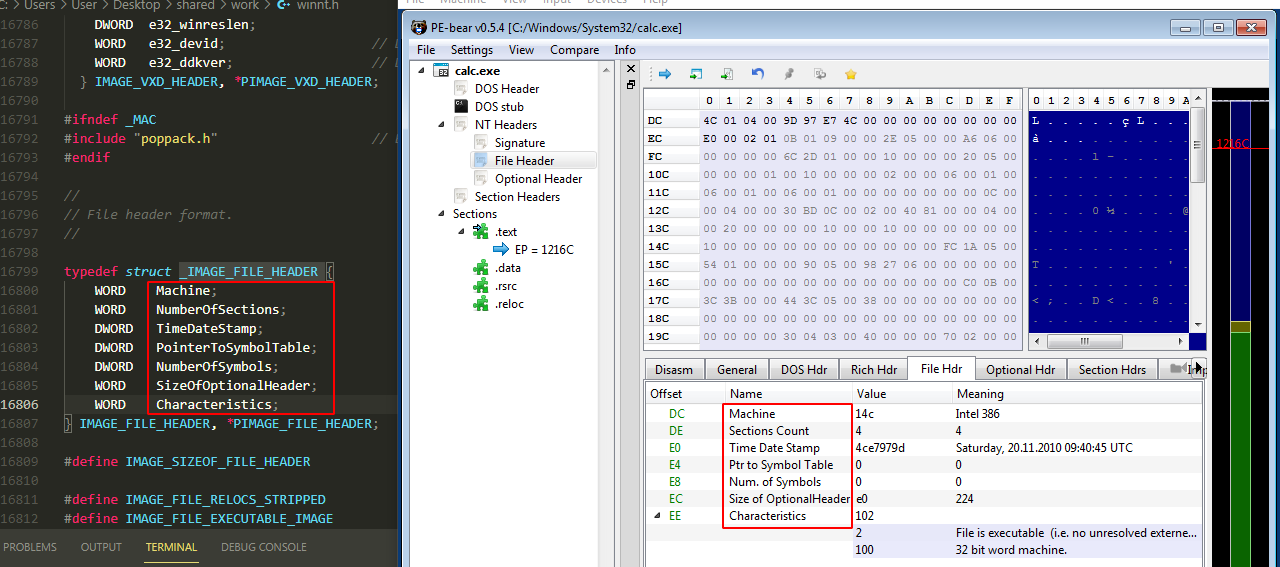
Optional Header - it’s optional in context of COFF object files but not PE files. It contains many important variables such as AddressOfEntryPoint, ImageBase, Section Alignment, SizeOfImage, SizeOfHeaders and the DataDirectory. This structure has 32-bit and 64-bit versions:
typedef struct _IMAGE_OPTIONAL_HEADER {
//
// Standard fields.
//
WORD Magic;
BYTE MajorLinkerVersion;
BYTE MinorLinkerVersion;
DWORD SizeOfCode;
DWORD SizeOfInitializedData;
DWORD SizeOfUninitializedData;
DWORD AddressOfEntryPoint;
DWORD BaseOfCode;
DWORD BaseOfData;
//
// NT additional fields.
//
DWORD ImageBase;
DWORD SectionAlignment;
DWORD FileAlignment;
WORD MajorOperatingSystemVersion;
WORD MinorOperatingSystemVersion;
WORD MajorImageVersion;
WORD MinorImageVersion;
WORD MajorSubsystemVersion;
WORD MinorSubsystemVersion;
DWORD Win32VersionValue;
DWORD SizeOfImage;
DWORD SizeOfHeaders;
DWORD CheckSum;
WORD Subsystem;
WORD DllCharacteristics;
DWORD SizeOfStackReserve;
DWORD SizeOfStackCommit;
DWORD SizeOfHeapReserve;
DWORD SizeOfHeapCommit;
DWORD LoaderFlags;
DWORD NumberOfRvaAndSizes;
IMAGE_DATA_DIRECTORY DataDirectory[IMAGE_NUMBEROF_DIRECTORY_ENTRIES];
} IMAGE_OPTIONAL_HEADER32, *PIMAGE_OPTIONAL_HEADER32;
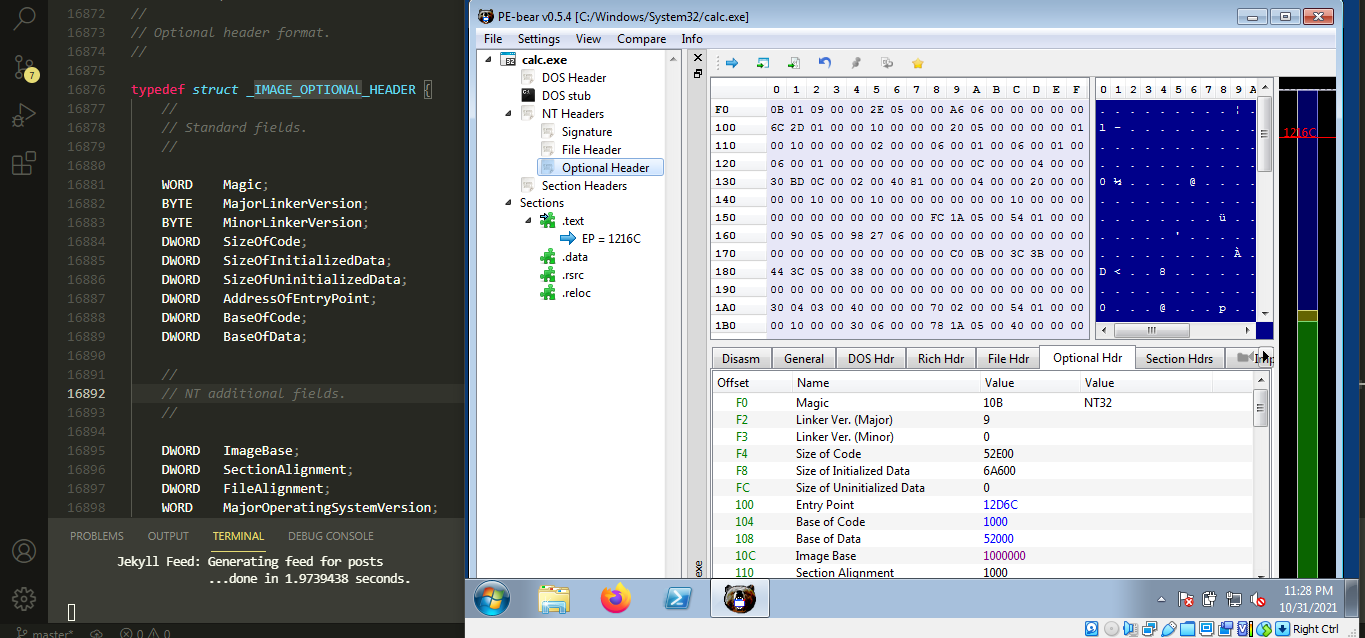
Here I want to draw you attention to IMAGE_DATA_DIRECTORY:
typedef struct _IMAGE_DATA_DIRECTORY {
DWORD VirtualAddress;
DWORD Size;
} IMAGE_DATA_DIRECTORY, *PIMAGE_DATA_DIRECTORY;
it’s data directory. Simply it is an array (16 in size), each element of which contains a structure of 2 DWORD values.
Currently, PE files can contain the following data directories:
- Export Table
- Import Table
- Resource Table
- Exception Table
- Certificate Table
- Base Relocation Table
- Debug
- Architecture
- Global Ptr
- TLS Table
- Load Config Table
- Bound Import
- IAT (Import Address Table)
- Delay Import Descriptor
- CLR Runtime Header
- Reserved, must be zero
As I wrote earlier, I will consider in more detail only some of them.
Section Table
Contains an array of IMAGE_SECTION_HEADER structs which define the sections of the PE file such as the .text and .data sections.
IMAGE_SECTION_HEADER structure is:
typedef struct _IMAGE_SECTION_HEADER {
BYTE Name[IMAGE_SIZEOF_SHORT_NAME];
union {
DWORD PhysicalAddress;
DWORD VirtualSize;
} Misc;
DWORD VirtualAddress;
DWORD SizeOfRawData;
DWORD PointerToRawData;
DWORD PointerToRelocations;
DWORD PointerToLinenumbers;
WORD NumberOfRelocations;
WORD NumberOfLinenumbers;
DWORD Characteristics;
} IMAGE_SECTION_HEADER, *PIMAGE_SECTION_HEADER;
and consists of 0x28 bytes.
Sections
After the section table comes the actual sections:
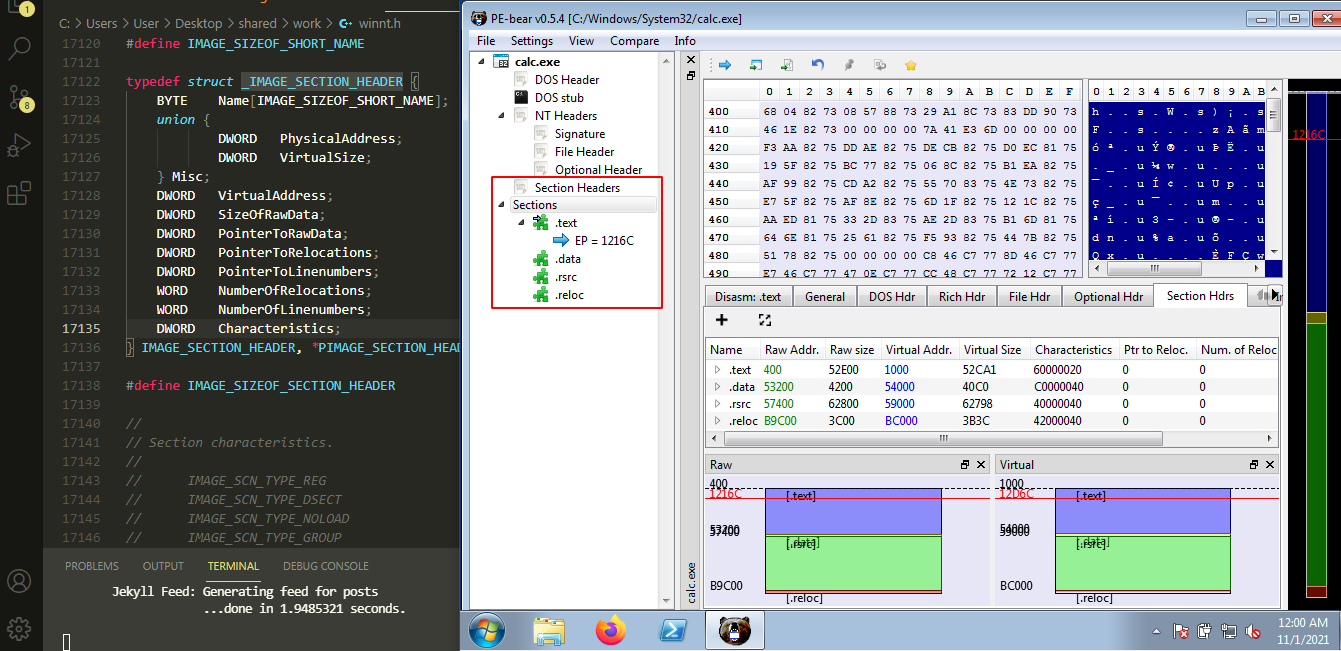
Applications do not directly access physical memory, they only access virtual memory. Sections are an area that is paged out into virtual memory and all work is done directly with this data. The address in virtual memory, without any offsets, is called the Virtual Address, or VA for short. In other words, the Virtual Addresses (VAs) are the memory addresses that are referenced by an application. Preferred download location for the application, set in the ImageBase field. It is like the point at which an application area begins in virtual memory. And the offsets RVA (Relative Virtual Address) are measured relative to this point. We can calculate RVA with the help of the following formula: RVA = VA - ImageBase. ImageBase is always known to us and having received VA or RVA at our disposal, we can express one through the other.
The size of each section is fixed in the section table, so the sections must be of a certain size, and for this they are supplemented with NULL bytes (00).
An application in Windows NT typically has different predefined sections, such as .text, .bss, .rdata, .data, .rsrc. Depending on the application, some of these sections are used, but not all are used.
.text
In Windows, all code segments reside in a section called .text.
.rdata
The read-only data on the file system, such as strings and constants reside in a section called .rdata.
.rsrc
The .rsrc is a resource section, which contains resource information. In many cases it shows icons and images that are part of the file’s resources. It begins with a resource directory structure like most other sections, but this section’s data is further structured into a resource tree. IMAGE_RESOURCE_DIRECTORY, shown below, forms the root and nodes of the tree:
typedef struct _IMAGE_RESOURCE_DIRECTORY {
DWORD Characteristics;
DWORD TimeDateStamp;
WORD MajorVersion;
WORD MinorVersion;
WORD NumberOfNamedEntries;
WORD NumberOfIdEntries;
} IMAGE_RESOURCE_DIRECTORY, *PIMAGE_RESOURCE_DIRECTORY;
.edata
The .edata section contains export data for an application or DLL. When present, this section contains an export directory for getting to the export information. IMAGE_EXPORT_DIRECTORY structure is:
typedef struct _IMAGE_EXPORT_DIRECTORY {
ULONG Characteristics;
ULONG TimeDateStamp;
USHORT MajorVersion;
USHORT MinorVersion;
ULONG Name;
ULONG Base;
ULONG NumberOfFunctions;
ULONG NumberOfNames;
PULONG *AddressOfFunctions;
PULONG *AddressOfNames;
PUSHORT *AddressOfNameOrdinals;
} IMAGE_EXPORT_DIRECTORY, *PIMAGE_EXPORT_DIRECTORY;
Exported symbols are generally found in DLLs, but DLLs can also import symbols. The main purpose of the export table is to associate the names and / or numbers of the exported functions with their RVA, that is, with the position in the process memory card.
Import Address Table
The Import Address Table is comprised of function pointers, and is used to get the addresses of functions when the DLLs are loaded. A compiled application was designed so that all API calls will not use direct hardcoded addresses but rather work through a function pointer.
Conclusion
The PE file format is more complex than I wrote in this post, for example, an interesting illustration about windows executable can be found on the Ange Albertini’s github project corkami:

This is a practical case for educational purposes only.
PE bear
MSDN PE format
corkami
An In-Depth Look into the Win32 Portable Executable File Format
An In-Depth Look into the Win32 Portable Executable File Format, Part 2
MSDN IMAGE_NT_HEADERS
MSDN IMAGE_FILE_HEADER
MSDN IMAGE_OPTIONAL_HEADER
MSDN IMAGE_DATA_DIRECTORY
Thanks for your time, happy hacking and good bye!
PS. All drawings and screenshots are mine




